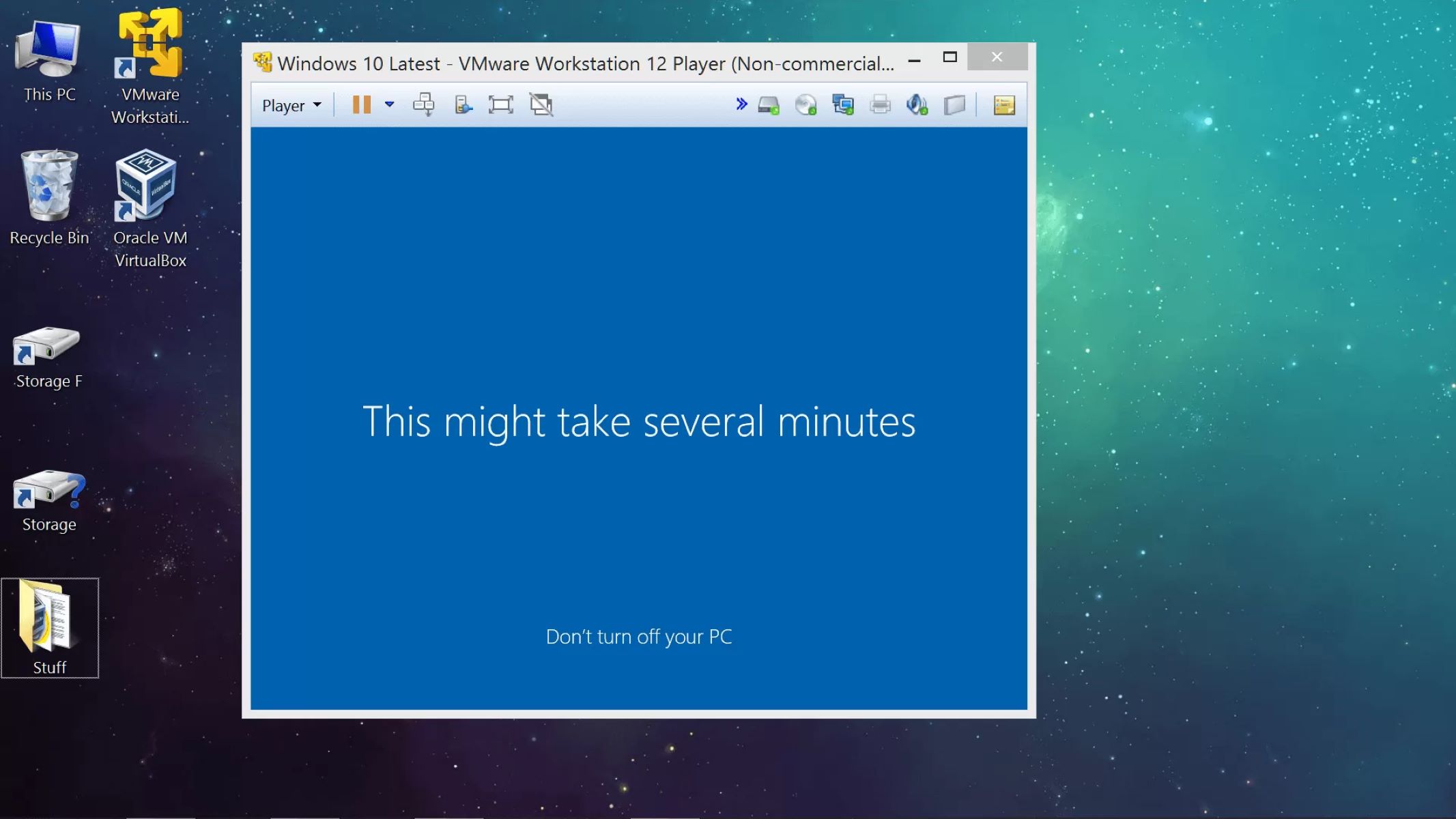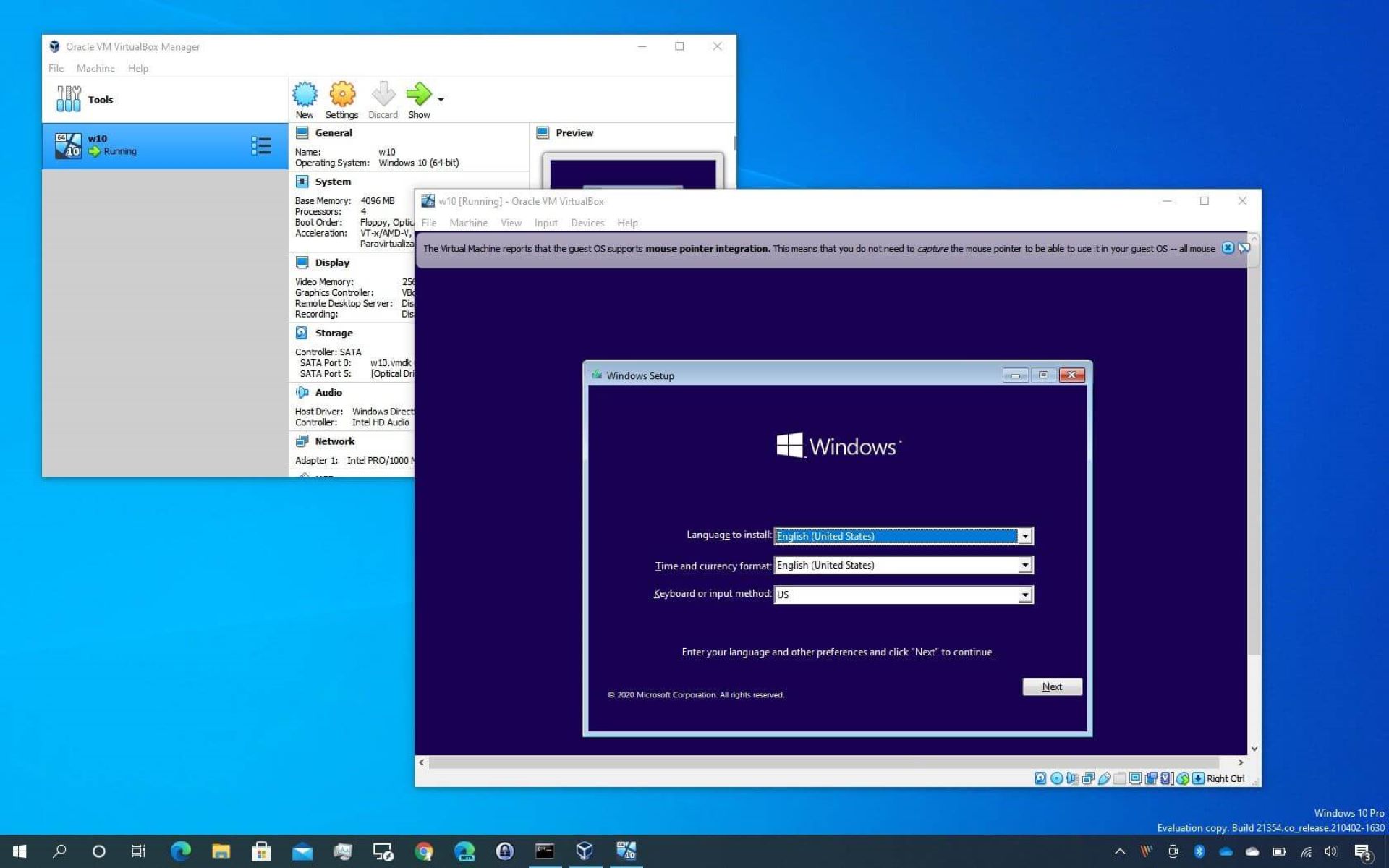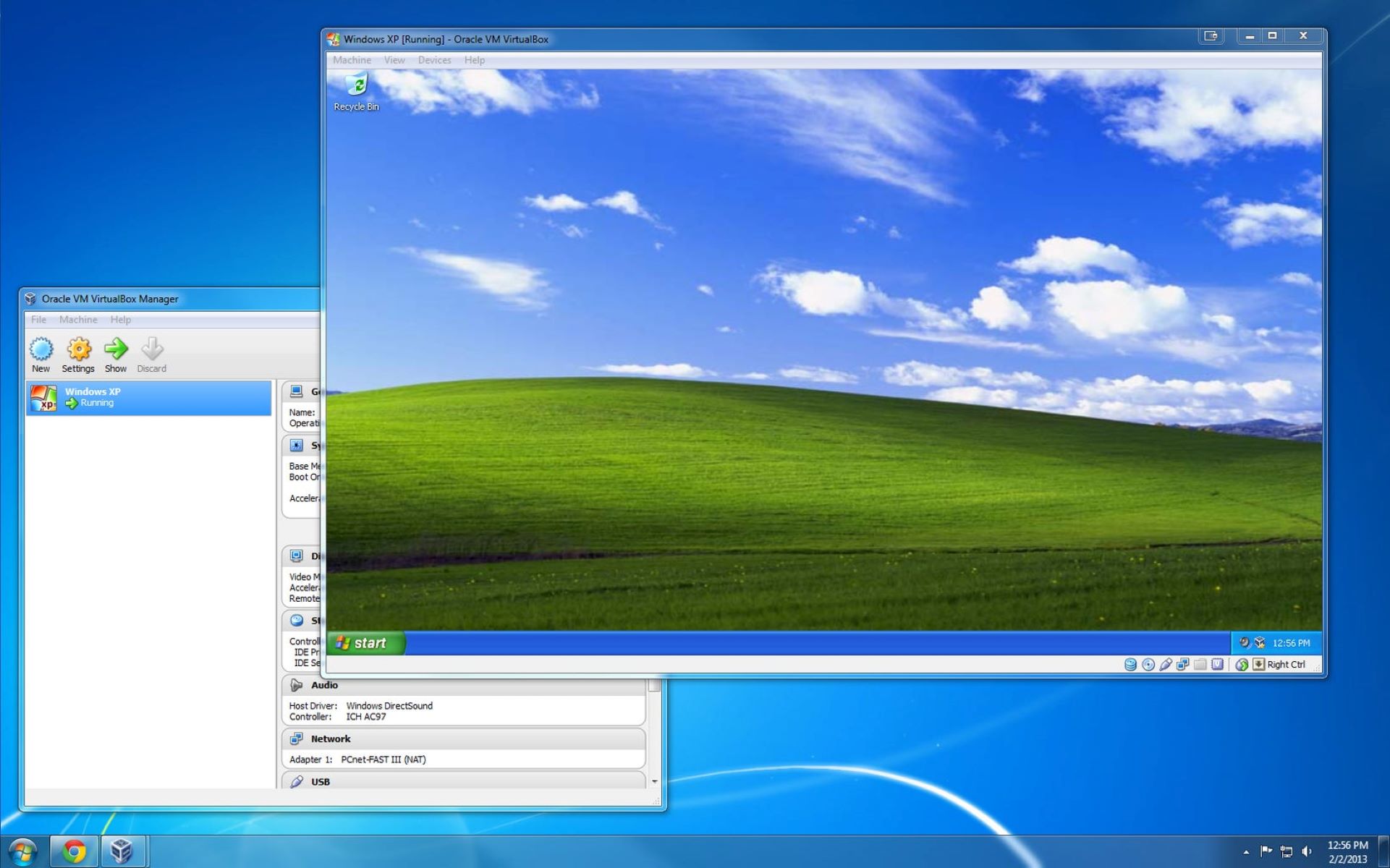Introduction
Virtual machines have revolutionized the way we utilize computer hardware and software. In today’s digital landscape, where scalability, flexibility, and efficiency are paramount, virtual machines offer a powerful solution. Whether you’re a seasoned IT professional or just starting your journey into the world of technology, understanding virtual machines is essential.
A virtual machine, also known as a VM, is a software implementation that emulates a physical computer system. It allows you to run multiple operating systems and applications on a single physical machine, called the host machine. Each VM functions as an isolated entity, with its own virtualized hardware, operating system, and applications.
The concept of virtualization dates back to the 1960s, but it has gained significant popularity and advancements in recent years. Virtual machines have become a cornerstone of modern computing infrastructure, enabling businesses to optimize resource utilization, improve scalability, and reduce costs.
So, how exactly does a virtual machine work? The virtualization layer, or hypervisor, is responsible for managing and allocating the physical resources of the host machine to each virtual machine. It acts as a bridge between the underlying hardware and the virtual machines running on top of it.
One of the key benefits of using virtual machines is the ability to run multiple operating systems simultaneously on a single physical machine. This means you can have a Windows virtual machine running alongside a Linux virtual machine, all on the same hardware.
Moreover, virtual machines offer unparalleled scalability. You can easily add or remove virtual machines depending on the workload or requirements, without having to invest in additional hardware. This makes virtual machines ideal for environments that frequently experience fluctuating resource demands.
Virtual machines also provide a level of isolation between each instance, making them more secure. If one virtual machine becomes compromised, the others remain unaffected, preventing the spread of malware or malicious activities.
In the following sections, we will delve deeper into the mechanics of virtual machines, explore the different types of virtual machines available, understand the differences between virtual and physical machines, and explore real-world use cases for virtual machines.
What is a Virtual Machine?
A virtual machine (VM) is a software emulation of a physical computer system. It allows you to run multiple operating systems and applications on a single physical machine, known as the host machine. Each virtual machine functions as an independent entity, with its own virtualized hardware, operating system, and applications.
Think of a virtual machine as a self-contained computer within a computer. It is created by allocating a portion of the host machine’s resources, such as CPU, memory, and storage, to the virtualized environment. This allows the virtual machine to operate as if it were a physical machine, running its own operating system and software stack.
The virtualization layer, known as the hypervisor, plays a crucial role in managing and allocating the physical resources of the host machine to each virtual machine. It acts as a bridge between the hardware and the virtual machines running on top of it.
Virtual machines offer significant advantages in terms of flexibility and resource utilization. By consolidating multiple virtual machines onto a single physical machine, businesses can maximize their hardware investment and reduce operational costs. It also enables easy scalability, as additional virtual machines can be created or removed based on workload demands.
These virtual machines can be customized to meet specific requirements. You can allocate different amounts of resources to each virtual machine, depending on the workload it needs to handle. This granularity of resource allocation allows for efficient utilization and optimized performance.
Another benefit of virtual machines is the ability to isolate applications and operating systems. Each virtual machine operates independently of the others, ensuring that any issues or security concerns within one virtual machine do not affect the others. This enhances security and makes virtual machines an attractive option for hosting sensitive applications or running different software configurations.
Furthermore, virtual machines provide an excellent platform for testing and development. They offer the ability to create snapshots or clones, which can be used to replicate a specific environment or to revert to a previous state if needed. This enables developers to experiment and test new software or configurations without risking the stability of the production environment.
In summary, a virtual machine is a powerful tool that allows you to maximize hardware resources, enhance flexibility, improve scalability, and increase security. It offers a cost-effective solution for running multiple operating systems and applications on a single physical machine. The versatility and benefits of virtual machines have made them an essential component of modern computing infrastructure.
How does a Virtual Machine work?
A virtual machine (VM) operates by leveraging a virtualization layer known as a hypervisor. The hypervisor acts as a bridge between the physical hardware of the host machine and the virtual machines running on top of it. It controls the allocation and management of resources, ensuring each virtual machine receives the necessary computing power, memory, and storage.
There are two main types of hypervisors: Type 1 and Type 2. Type 1 hypervisors, also known as bare-metal hypervisors, are installed directly on the host machine’s hardware. They have direct control over the physical resources and provide a lower level of abstraction. Type 2 hypervisors, on the other hand, are installed as software on a host operating system. They provide a higher level of abstraction but rely on the host operating system’s resources.
Once the hypervisor is installed and running, virtual machines can be created. Each virtual machine is allocated a portion of the host machine’s resources. This includes CPU cores, memory, storage space, and network connectivity. The hypervisor then presents these allocated resources to the virtual machine as if they were dedicated hardware.
The virtual machine operates as if it has its own isolated environment, running its own operating system and applications. From the perspective of the virtual machine, it is unaware that it is running on shared hardware with other virtual machines.
The hypervisor also provides mechanisms for managing resource allocation and sharing. It dynamically adjusts the allocation of resources across virtual machines based on usage and demand. This ensures that each virtual machine has access to the necessary resources while allowing for efficient resource utilization.
Additionally, the hypervisor enables communication between the virtual machines and the underlying physical hardware. It facilitates input/output operations, manages network connectivity, and handles storage access. In essence, it abstracts the complexities of the underlying hardware, providing an interface for virtual machines to interact with the host machine and the external networks.
Virtual machines can be managed and accessed using specialized software tools. These tools allow administrators to monitor the performance of virtual machines, allocate resources, create and clone instances, and configure network settings.
In recent years, advancements in virtual machine technology have been accompanied by the emergence of containerization. Containers are lightweight alternatives to virtual machines, offering faster setup and deployment times. While containers are more suitable for certain types of applications, virtual machines continue to be the preferred choice for environments requiring stronger isolation and running multiple operating systems simultaneously.
Overall, virtual machines provide a powerful and flexible solution for running multiple operating systems and applications on a single physical machine. Through the management of resources by the hypervisor, virtual machines facilitate efficient resource utilization, isolation, and flexibility in modern computing environments.
Benefits of using a Virtual Machine
Virtual machines offer numerous benefits that make them an indispensable tool in modern computing. Whether for individual users or businesses, the advantages of using virtual machines are significant and diverse. Here are some key benefits:
- Resource Optimization: By running multiple virtual machines on a single physical host, organizations can maximize hardware resources. This reduces the need for purchasing and maintaining multiple physical machines, resulting in cost savings and improved efficiency.
- Flexibility and Scalability: Virtual machines offer unparalleled flexibility. Administrators can easily add or remove virtual machines depending on workload demands or requirements. This scalability allows businesses to adapt quickly to changing needs without the need for additional hardware investments.
- Isolation and Security: Each virtual machine operates in an isolated environment, separate from other virtual machines. This isolation provides enhanced security, as any issues or attacks within one virtual machine do not affect the others. It is particularly advantageous when hosting sensitive applications or running different software configurations.
- Easy Software Testing and Development: Virtual machines provide an ideal platform for software testing and development. Developers can create snapshots or clones of virtual machines, allowing them to experiment and test new software or configurations without impacting the stability of the production environment. It promotes faster development cycles and reduces the risk of unintended consequences.
- Platform Compatibility: Virtual machines enable running multiple operating systems on a single physical machine. This capability allows organizations to support various software platforms without the need for separate hardware. It is particularly useful for running legacy applications or creating test environments for different operating systems.
- High Availability: Virtual machines can be configured for high availability, ensuring that applications have minimal downtime. If a physical host machine fails, the virtual machines running on it can be quickly migrated to another host, minimizing disruption to critical services.
- Disaster Recovery: Virtual machine snapshots and backups simplify disaster recovery planning and implementation. These features allow organizations to replicate virtual machines across different physical locations, providing an effective disaster recovery solution. In the event of a system failure or data loss, virtual machines can be easily restored from backups or replicated instances.
- Green Computing: Virtual machines contribute to environmental sustainability by reducing the number of physical machines needed. This consolidation leads to lower power consumption, reduced space requirements, and decreased e-waste.
- Education and Learning: Virtual machines provide an excellent platform for educational purposes and learning environments. Students and professionals can experiment, practice, and gain hands-on experience with different operating systems, applications, and network configurations.
In summary, virtual machines offer a wide range of benefits that include optimal resource utilization, scalability, isolation, security, flexibility, and simplified disaster recovery. Their adaptability and versatility make them a valuable asset across various industries and use cases, enabling businesses and individuals to achieve more with their computing infrastructure.
Different types of Virtual Machines
Virtual machines come in various types, each catering to specific use cases and requirements. Understanding the different types of virtual machines is crucial for selecting the most suitable option for your needs. Here are some common types of virtual machines:
- Full virtualization: This type of virtualization allows for the creation of complete virtual machines that run their own operating system, independent of the host machine. It emulates the underlying hardware, enabling the virtual machine to run unmodified guest operating systems. Examples of full virtualization platforms include VMware ESXi, Microsoft Hyper-V, and Citrix XenServer.
- Para-virtualization: Unlike full virtualization, para-virtualization requires modifying the guest operating system. This modification enables the guest to be aware that it is running in a virtualized environment, resulting in improved performance and efficiency. Xen, an open-source hypervisor, is a popular platform that utilizes para-virtualization.
- Operating system-level virtualization: Also known as containerization, this type of virtualization operates at the operating system level without emulating hardware. Containers share the host machine’s kernel and underlying resources, resulting in lightweight and efficient virtualization. Popular containerization platforms include Docker and Kubernetes.
- Desktop virtualization: Desktop virtualization allows multiple virtual desktop instances to run on a single physical machine. Each virtual desktop functions like a full-fledged standalone computer, with its own operating system and applications. This form of virtualization is commonly used in environments where users require access to different operating systems or specific software configurations.
- Application virtualization: Application virtualization separates applications from the underlying operating system, allowing them to run in isolated environments. This isolation eliminates software conflicts and simplifies application deployment and management. Examples of application virtualization platforms include Microsoft App-V, Citrix XenApp, and VMware ThinApp.
- Network virtualization: Network virtualization involves creating virtual network segments or overlays that operate on top of the physical network infrastructure. It enables the virtualization of network components such as switches, routers, and firewalls. This type of virtualization provides flexibility, scalability, and easier management of complex network environments.
- Storage virtualization: Storage virtualization abstracts and centralizes physical storage devices into virtual storage pools. It allows for more efficient allocation and management of storage resources, simplifies data migration and backup, and increases overall storage performance. Solutions like VMware vSAN and Microsoft Storage Spaces provide storage virtualization capabilities.
- Hardware-assisted virtualization: Hardware-assisted virtualization relies on underlying hardware features, such as Intel VT-x or AMD-V, to enhance virtualization performance and security. These hardware technologies help accelerate virtual machine operations, improve isolation, and reduce overhead.
It is essential to select the appropriate type of virtual machine based on the specific requirements of your use case. Factors such as performance, compatibility, resource efficiency, and management capabilities should be considered when deciding which type of virtual machine to utilize.
Each type of virtual machine has its strengths and use cases, and organizations can even combine different types to meet their unique needs. By understanding the different types of virtual machines available, you can make informed decisions and leverage the benefits of virtualization effectively.
Virtual Machine vs Physical Machine
The comparison between virtual machines (VMs) and physical machines is crucial in understanding the advantages and considerations of each approach. Here are the key differences and considerations when comparing virtual machines to physical machines:
- Hardware utilization: Virtual machines allow for better hardware utilization compared to physical machines. By running multiple virtual machines on a single physical host, resource utilization is maximized, reducing wasted hardware capacity.
- Scalability: Virtual machines offer greater scalability compared to physical machines. With virtualization, new virtual machines can be created or removed quickly, based on workload demands. This flexibility enables organizations to scale their infrastructure dynamically without the need for additional physical hardware.
- Isolation: Virtual machines provide isolated environments for running applications or operating systems. This isolation ensures that any issues or security breaches within one virtual machine do not impact others. In contrast, physical machines require separate hardware to achieve the same level of isolation.
- Software compatibility: Virtual machines enable the simultaneous operation of multiple operating systems on a single physical host. This capability allows organizations to support various software platforms without the need for separate hardware. In contrast, physical machines are limited to a single operating system.
- Hardware dependencies: Physical machines have direct access to hardware resources, allowing for optimal performance in certain scenarios. Virtual machines, on the other hand, have an extra layer of abstraction through the hypervisor, which can introduce slight performance overhead.
- Cost efficiency: Virtual machines can provide cost savings in terms of hardware investment and operational expenses. By consolidating multiple virtual machines onto a single physical host, organizations can reduce the need for purchasing and maintaining individual physical machines, resulting in cost optimization.
- Hardware maintenance: Physical machines require regular hardware maintenance, including upgrades, repairs, and hardware replacements. In a virtual machine environment, hardware maintenance is centralized, requiring fewer resources and minimizing disruption for end users.
- Data backup and disaster recovery: Virtual machines simplify data backup and disaster recovery processes. Snapshots and backups of virtual machines can be easily created and restored, allowing for efficient recovery in case of system failures or data loss. Physical machines often require more complex and time-consuming backup and recovery procedures.
- Eco-friendliness: Virtual machines contribute to environmental sustainability by reducing the number of physical machines required. Consolidating multiple virtual machines onto a smaller number of physical hosts leads to lower power consumption, reduced space requirements, and decreased e-waste.
It’s important to note that virtual machines are not always the optimal solution. Certain scenarios, such as resource-intensive applications or hardware-specific requirements, may still benefit from running on dedicated physical machines. It’s essential to assess the specific needs and constraints of your environment when deciding between virtual and physical machines.
Overall, virtual machines offer significant advantages in terms of hardware utilization, scalability, isolation, software compatibility, cost efficiency, and ease of backup and recovery. By leveraging virtualization technology, organizations can maximize their infrastructure’s efficiency, flexibility, and cost-effectiveness.
Use Cases for Virtual Machines
Virtual machines (VMs) have a wide range of use cases across various industries and environments. By leveraging the benefits of virtualization, organizations can achieve greater flexibility, scalability, cost savings, and improved resource utilization. Here are some common use cases for virtual machines:
- Server consolidation: Virtual machines allow organizations to consolidate multiple physical servers onto a smaller number of physical hosts. By running several virtual machines on a single physical server, businesses can optimize resource usage, reduce hardware costs, and simplify management and maintenance.
- Software development and testing: Virtual machines provide an ideal platform for software development and testing. Developers can create multiple virtual machine instances to simulate various environments and configurations. This enables faster software development cycles, easier testing of different setups, and quick environment replication.
- Legacy application support: Virtual machines enable organizations to run legacy applications that are incompatible with newer operating systems or hardware. By virtualizing the required older operating system, businesses can continue to use legacy applications without the need for dedicated physical hardware.
- Disaster recovery and business continuity: Virtual machines play a crucial role in disaster recovery strategies. By replicating virtual machine instances across different physical locations or cloud environments, organizations can ensure business continuity in the event of system failures or disasters. Virtual machine snapshots and backups simplify recovery procedures.
- Desktop and application virtualization: Virtual machines are widely used for desktop and application virtualization. By virtualizing individual desktops or applications, organizations can provide a consistent and secure user experience across different devices and locations. Virtual desktop infrastructure (VDI) and application virtualization platforms allow centralized management and secure access to virtualized resources.
- Education and training environments: Virtual machines are valuable tools in educational and training settings. They enable students and professionals to gain hands-on experience with different operating systems, software configurations, and networking setups. Virtual machines provide a safe and isolated learning environment for experimenting and learning without the risk of affecting production systems.
- Web hosting and cloud computing: Virtual machines form the foundation of many web hosting services and cloud computing platforms. By virtualizing server resources, hosting providers can offer scalable and cost-effective solutions to customers. Virtual machines allow for easy allocation and management of resources, enabling on-demand provisioning and pay-as-you-go models.
- Data center optimization: Virtual machines are essential components in optimizing data center operations. By consolidating servers into virtual machines, organizations can reduce the physical footprint, simplify hardware management, and improve energy efficiency. Virtual machines enable efficient resource allocation and allow for more efficient utilization of server hardware resources.
- Security testing and sandboxing: Virtual machines provide a secure and isolated environment for security testing and sandboxing. By running potentially risky software or code within a virtual machine, organizations can protect the host system and network from potential threats. Virtual machines are used in processes like penetration testing, malware analysis, and vulnerability assessments.
These are just a few examples of the many use cases for virtual machines. The versatility, scalability, and cost-efficiency of virtualization technology make them valuable assets across various industries, from small businesses to large enterprises.
It is important for organizations to assess their specific needs and requirements when considering the implementation of virtual machines. By tailoring virtual machine deployments to their unique use cases, businesses can harness the full potential of virtualization technology.
Popular Virtual Machine Software
There are several well-known virtual machine software platforms available in the market, each offering unique features and benefits. These virtual machine software applications provide the necessary tools and infrastructure to create and manage virtual machines. Here are some popular virtual machine software platforms:
- VMware vSphere: VMware vSphere is a comprehensive virtualization platform that provides a range of products and features for building and managing virtual infrastructure. It includes VMware ESXi, a Type 1 hypervisor, and vCenter Server, a centralized management platform for virtual machines and hosts. VMware vSphere is widely used in enterprise environments.
- Oracle VM VirtualBox: Oracle VM VirtualBox is a free and open-source virtualization platform that offers cross-platform support. It allows users to create and run multiple virtual machines on a single physical host machine. VirtualBox supports a wide range of operating systems and provides features like snapshotting, seamless desktop integration, and virtual networking.
- Microsoft Hyper-V: Microsoft Hyper-V is a native hypervisor included with Windows Server and Windows 10 Pro/Enterprise. It allows users to create virtual machines on Microsoft platforms and provides features for managing virtualized environments. Hyper-V supports various operating systems and offers functionalities like live migration, checkpoints, and integration with Microsoft Azure.
- Citrix Hypervisor: Citrix Hypervisor, formerly known as XenServer, is an enterprise-grade virtualization platform that offers robust management and scalability features. It leverages the open-source Xen hypervisor technology and provides enterprise-level virtualization capabilities. Citrix Hypervisor supports live migration, high availability, resource pooling, and integrates with Citrix Virtual Apps and Desktops.
- Proxmox Virtual Environment: Proxmox Virtual Environment is an open-source virtualization platform based on Debian Linux. It combines containerization (OpenVZ) and full virtualization (KVM) to provide a comprehensive virtualization solution. Proxmox offers features like live migration, high availability, software-defined networking, and a web-based management interface.
- Red Hat Virtualization: Red Hat Virtualization is an open-source virtualization platform based on the Kernel-based Virtual Machine (KVM) hypervisor. It provides powerful virtualization capabilities, enterprise-grade management tools, and integration with other Red Hat products. Red Hat Virtualization offers features like live migration, high-performance networking, and centralized management through the Red Hat Virtualization Manager.
- Amazon EC2 (Elastic Compute Cloud): Amazon EC2 is a web service provided by Amazon Web Services (AWS) that offers flexible and scalable cloud computing solutions. With Amazon EC2, users can provision virtual servers, known as instances, and utilize them as virtual machines. It provides a wide range of instance types, storage options, and integrations with other AWS services.
- Google Compute Engine: Google Compute Engine is a part of the Google Cloud Platform (GCP) that provides infrastructure as a service (IaaS). With Compute Engine, users can create and manage virtual machines in the cloud. It offers a variety of instance types, customizable configurations, and integrations with other GCP services.
- VMware Workstation: VMware Workstation is a desktop virtualization software that allows users to create and run multiple virtual machines on a Windows or Linux host. It is widely used for testing, development, and running different operating systems on a single desktop or laptop. VMware Workstation provides features like clone creation, snapshotting, and virtual networking.
These are just a few examples of the popular virtual machine software available. It is crucial to evaluate the features, compatibility, pricing, and support options of each platform to choose the one that best meets your virtualization requirements.
Whether for personal use, development, or enterprise-level deployments, virtual machine software provides the necessary foundation for creating, running, and managing virtual environments.
Conclusion
Virtual machines have revolutionized the way we utilize computer hardware and software. They provide a powerful solution for running multiple operating systems and applications on a single physical machine, offering numerous benefits such as resource optimization, scalability, and enhanced security.
By leveraging virtual machine technology, organizations can maximize hardware utilization, reduce costs, improve flexibility, and simplify management. Virtual machines are invaluable in various use cases, including server consolidation, software development and testing, legacy application support, disaster recovery, desktop virtualization, and more.
There are different types of virtual machines available, such as full virtualization, para-virtualization, operating system-level virtualization, and more. Each type caters to specific needs and requirements, ensuring flexibility and efficiency in virtualized environments.
Popular virtual machine software platforms, such as VMware vSphere, Oracle VM VirtualBox, Microsoft Hyper-V, and others, provide the necessary tools for creating, managing, and running virtual machines. These platforms offer features like live migration, high availability, resource pooling, and integration with cloud services.
As technology advances, virtual machines continue to play a crucial role in modern computing infrastructure. Their ability to efficiently allocate resources, provide isolation, simplify management, and offer cost-effective solutions makes them an essential component for businesses of all sizes.
Whether you are an IT professional, a software developer, or an organization seeking optimized infrastructure, understanding virtual machines and their benefits is key. By harnessing the power of virtualization, you can unlock new opportunities, simplify operations, and achieve improved efficiency in your computing environments.

























